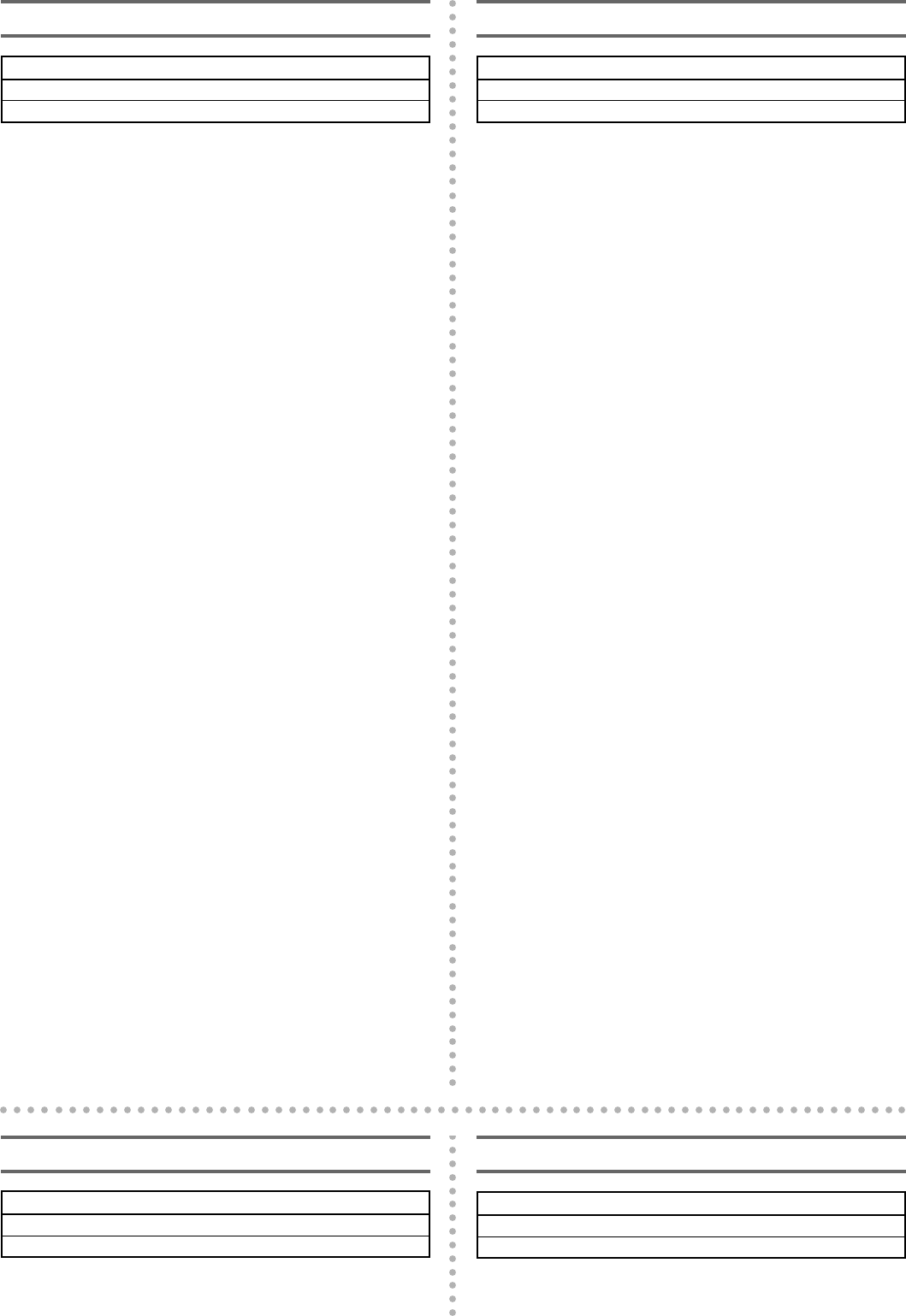
23
Straight Stitching
Pattern
5 (Center needle position)
6 (Left needle position)
The Straight Stitch (5 or 6) is used for top stitching and sewing
lightweight fabrics.
Starting Sewing (fig. A)
1. Set the pattern selection dial to the appropriate Straight Stitch
(5 or 6) with the desired length.
2. Raise the needle to its highest position and lift the presser foot
lifter.
3. Pull up the lower thread by turning the balance wheel toward
you (counterclockwise) and place both the upper and lower
threads straight behind the presser foot.
4. Place the fabric under the presser foot and position the needle
1 cm (3/8") from the edge of the fabric.
5. Lower the presser foot.
6. To backtack, press down the reverse sewing lever as far as pos-
sible and lightly step on the foot controller. Sew 5 to 10 stitches
in the reverse direction. Backtacking (reverse sewing) is used
for locking the end of seams and reinforcing stitches.
7. Release the reverse sewing lever and start sewing in the for-
ward direction by applying pressure to the foot controller.
Changing Sewing Direction (fig. B)
1. Stop the machine at the point where you wish to change direc-
tions with the needle still in the fabric. If the needle ends in the
up position, turn the balance wheel toward you
(counterclockwise) until the needle enters the fabric.
2. Raise the presser foot and turn the fabric to line up its new
direction using the needle as a turning point.
3. Lower the presser foot and start sewing in the new direction.
NOTE:
For twin-needle sewing, raise the needle when changing the sew-
ing direction.
Finishing Sewing (fig. C)
1. Stitch to the end of the seam and stop.
2. Press down the reverse sewing lever and lightly step on the foot
controller to stitch backwards for 1 cm (3/8) from the end of the
fabric over the top of the existing stitch.
Removing the Material From the Machine (fig. D)
1. Stop the machine.
2. Raise the needle to its highest position and make sure that the
thread take-up lever is also in its highest position.
3. Lift the presser foot and pull the fabric out gently to the left
side.
4. Cut both threads using the thread cutter located on the back of
the presser foot bar.
5. To prepare the machine for the next seam, pull about 10 cm
(4") of both threads and place them toward the back of the
machine. The upper thread should pass between the toes of the
presser foot.
1 Thread cutter
Point droit
Modèle
5 (Aiguille au centre)
6 (Aiguille à gauche)
Le point droit (modèle 5 ou 6) sert pour la “haute couture” et pour
coudre sur des tissus légers.
Pour commencer à coudre (fig. A)
1. Régler le sélecteur de modèle sur le point droit approprié (5 ou
6), avec la longueur souhaitée.
2. Remonter complètement l’aiguille et relever le levier du pied-
de-biche.
3. Remonter le fil inférieur en tournant le volant vers soi (dans le
sens opposé aux aiguilles d’une montre) et tirer les deux fils,
inférieur et supérieur, vers l’arrière du pied-de-biche.
4. Placer le tissu sous le pied-de-biche et mettre l’aiguille à 1 cm
du bord du tissu.
5. Abaisser le pied-de-biche.
6. Pour arrêter la couture, abaisser complètement le levier de cou-
ture en marche arrière et appuyer légèrement sur la pédale.
Coudre 5 à 10 points en marche arrière pour arrêter et consoli-
der la couture.
7. Relâcher le bouton de couture en marche arrière et commen-
cer à coudre en avant en appuyant sur la pédale.
Pour modifier le sens de la couture (fig. B)
1. Arrêter la machine à l’endroit souhaité pour le changement de
direction, en laissant l’aiguille piquée dans le tissu. Si l’aiguille
est en position relevée, tourner le volant vers soi (dans le sens
opposé aux aiguilles d’une montre) jusqu’à ce que l’aiguille
pénètre dans le tissu.
2. Relever le pied-de-biche et faire pivoter le tissu autour de l’axe
formé par l’aiguille, pour l’orienter dans la nouvelle direction.
3. Abaisser le pied-de-biche et commencer à coudre dans le nou-
veau sens.
REMARQUE:
Pour la couture avec une aiguille jumelée, relever l’aiguille pour
changer de direction de couture.
Pour terminer la couture (fig. C)
1. Piquer jusqu’au bout de la couture puis arrêter la machine.
2. Abaisser le levier de couture en marche arrière et appuyer
légèrement sur la pédale pour coudre sur 1 cm en arrière à
partir du bord du tissu et recouvrir les points existants.
Pour retirer le tissu de la machine (fig. D)
1. Arrêter la machine.
2. Remonter complètement l’aiguille et veiller à ce que le levier
releveur soit également en position supérieure.
3. Relever le pied-de-biche et dégager doucement le tissu vers la
gauche.
4. Couper les deux fils à l’aide du coupe-fils situé derrière la barre
du pied-de-biche.
5. Afin de préparer la machine pour la couture suivante, tirer en-
viron 10 cm des deux fils et les placer vers l’arrière de la ma-
chine. Le fil supérieur doit passer entre les branches du pied-
de-biche.
1 Coupe-fils
Gerades Nähen
Muster
5 (Nadelposition Mitte)
6 (Nadelposition links)
Der Geradstich (5 oder 6) wird zum Applizieren und das Nähen von
leichten Stoffe benutzt.
Rechte steek
Patroon
5 (Naald in het midden)
6 (Naald in de linkerstand)
De rechte steek (5 of 6) wordt gebruikt voor het doorstikken en naaien
van dunne stoffen.


















